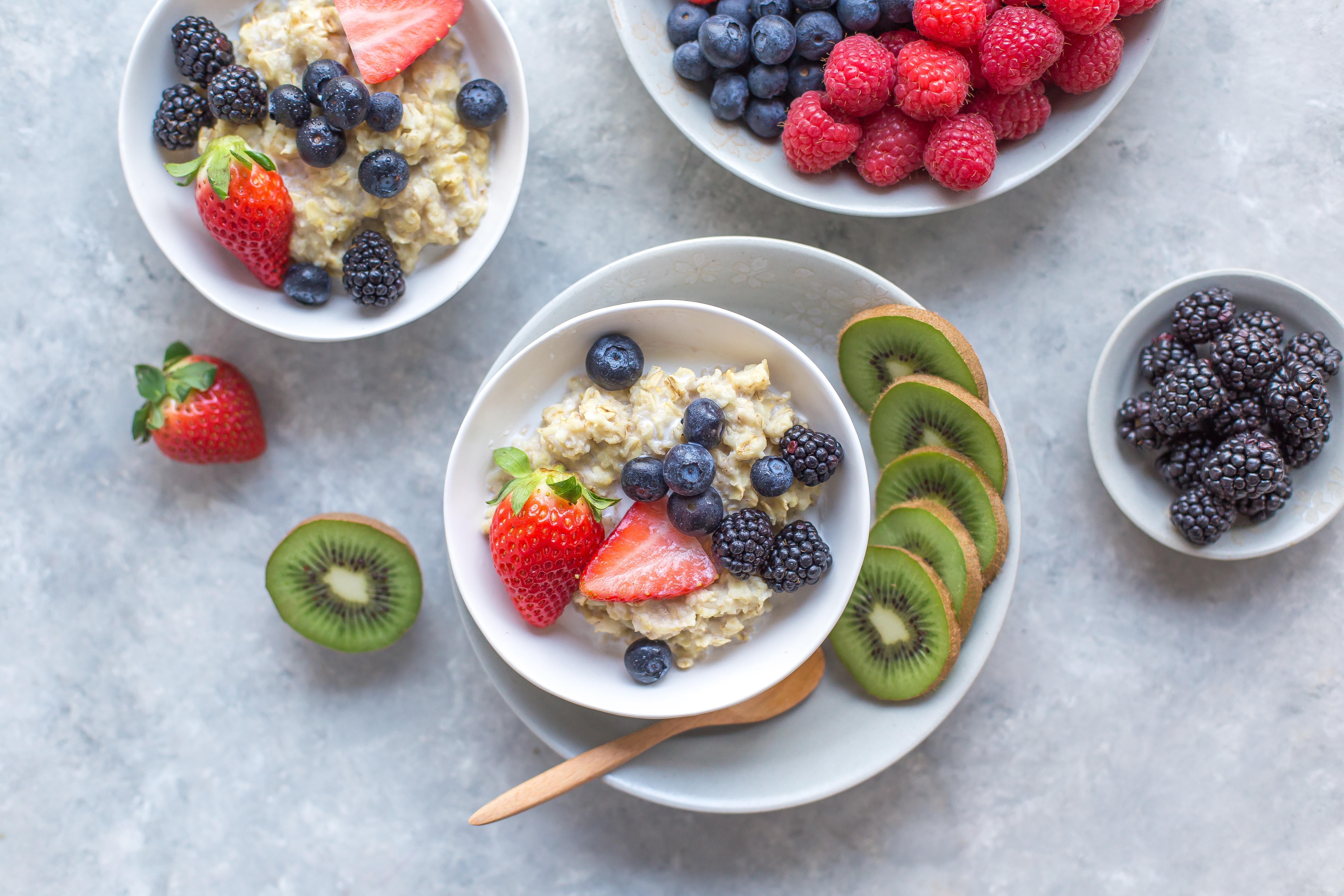This month is Bowel Cancer Awareness Month, which aims to raise awareness of Australia’s second deadliest cancer, bowel cancer.
Thankfully there are a number of modifiable risk factors when it comes to bowel cancer and one, which gets a lot of attention, is fibre intake. A study from 2017 showed 3 daily servings (90g in total) of wholegrains can lower risk of bowel cancer by 17%. This makes sense as wholegrains contain more fibre, antioxidants and vitamins/minerals compared to refined grains. In addition, a previous study has also shown that for each 10g of fibre eaten daily the risk of bowel cancer reduces by 10%. This means, its important to pay attention to your daily fibre intake and make sure you are getting enough not only to protect against bowel cancer but for overall wellbeing. As you will read below, there are many foods rich in fibre, in addition to wholegrains, which can be easily incorporated into the diet. I particularly like to get fibre from vegetables as they are incredibly nutrient dense and I know by eating vegetables, I am not only getting fibre but also an array of vitamins, minerals, antioxidants, phytochemicals and other beneficial compounds.
What are the different types of fibre?
All fibre is not the same, there are in fact a few different types of fibre including:
Soluble fibre: slows down the digestive system, reduces raise in blood sugar levels and helps clear cholesterol. Food sources include chia and linseeds, oat bran, psyllium, green peas, vegetables and fruit.
Insoluble fibre: speeds up the bowels (good for constipation) and acts as a broom to sweep out the digestive tract. Food sources include rice bran, root vegetables, legumes, wholegrains and nuts/seeds.
Resistant starch: cannot be digested and goes straight to the colon to feed bacteria, useful for weight loss and overall gut health. Food sources include cooked and cooked pasta, rice and potatoes, green bananas, peas and cannellini beans.
Beta-Glucan is another important aspect of fibre; beta-glucan is a viscous fibre within foods (eg oats). The bacteria in our intestinal tract feed off the beta-glucan we consume and produces short-chain fatty acids and help to support the immune system.
How much fibre do we need daily?
The daily adequate intake of fibre for male adults is 30g per day and 25g per day for women. If you aren’t familiar with which foods are high in fibre, here are a few examples including the fibre content:
Fruit
1 pear with skin = 5.5g
1 medium apple = 4.5g
1 banana = 3g
1 cup strawberries = 3g
2 dried figs = 1.5g
Wholegrains
1 cup cooked quinoa = 8g
1 cup cooked brown rice = 3.5g
1 cup cooked buckwheat = 4.5g
2 slices wholemeal bread = 4g
1 cup raw oats = 9g
¼ cup oat bran = 6.5g
100g brown rice pasta = 2.5g
Legumes
1 cup lentils = 15g
1 cup green peas = 8g
1 cup chickpeas = 9.5g
1 cup cannellini beans = 16g
Vegetables
1 cup brussel sprouts (cooked) = 4g
1 cup sweet potato (cooked) = 7.5g
1 cup broccoli (cooked) = 5g
1 cup cauliflower = 3g
1 cup cabbage = 1.6g
Nut/seeds
30g hemp seeds = 1.9g
¼ cup almonds = 3g
30g cashews = 1.8g
30g macadamia nuts = 2g
30g pumpkin seeds = 1.7g
30g flaxseeds = 7g
How do I add more fibre to my day?
Breakfast
- Swap refined cereal for whole rolled oats + fruit + oat bran + flaxseeds
- Add 1 tbsp. hemp seeds and oats to smoothies
- Sprinkle a mix of chia, flax and hemp seeds on fruit salad
- Swap honey for hummus, tomato, avocado and a sprinkle of hemp on wholegrain bread
- Add fresh banana to pancake batter and top with fruit
- Make a fresh vegetable juice and add the pulp back in
Snacks
- Snack on raw veg + dip such as hummus, cannellini bean or beetroot dip
- Try a small smoothie with raw oats, nuts/seeds and fruit
- Pack a piece of fruit + raw nuts for a quick snack
- Make a trail mix with dried figs, seeds and nuts
- Roast some legumes such as chickpeas
- Make a little extra salad at lunch and have the rest at afternoon tea
Lunch/Dinner
- Aim for at least ½ plate vegetables + ¼ plate wholegrain carbs or starchy veg (eg sweet potato)
- Make a pasta using wholemeal or brown rice pasta instead of white and add an array of vegetables to the sauce
- Have a small vegetable based soup eg sweet potato or cauliflower as an entrée or light meal served with wholegrain toast
- Roast a batch of vegetables for the week and toss into salads as a quick lunch + legumes
- Swap animal protein for legumes a few times per week
- Make a green pea puree or hummus to serve with meat/fish
- Add fruit to salads for example chickpea, strawberry and feta or pear and parmesan!
